The WNBA Is Finally Catching Up on Mental Health

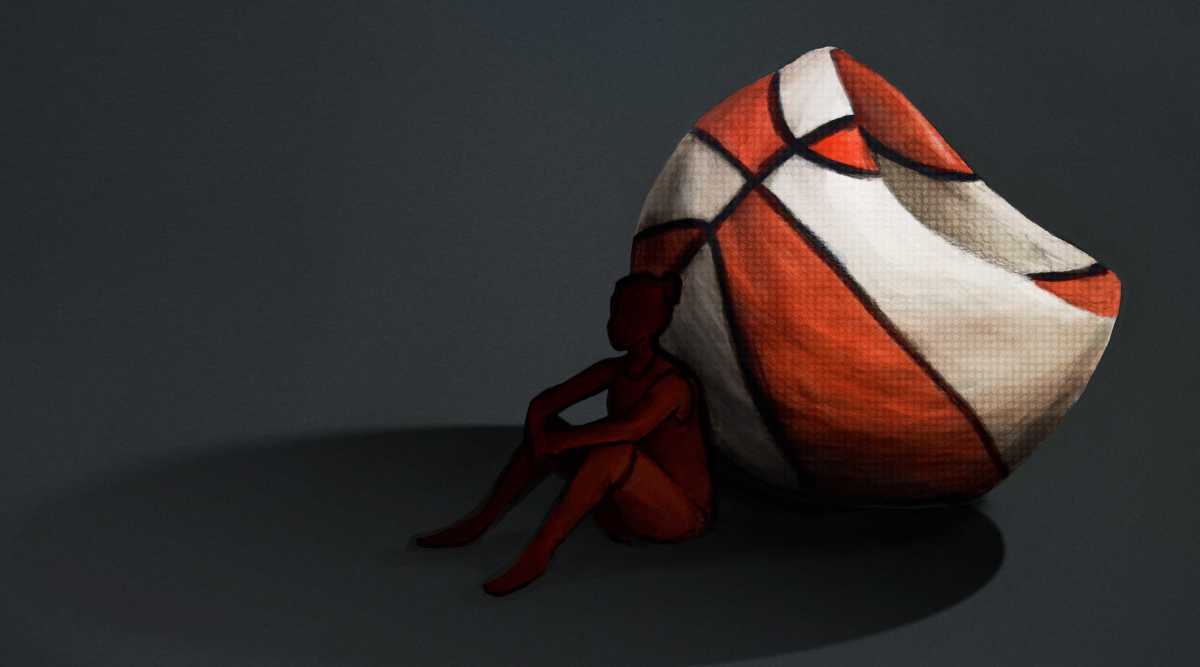
Hours after beating Team USA with a 18–14 double double in under 30 minutes of playing time in the 2021 WNBA All-Star Game, Sun star Jonquel Jones explained what her latest season in Russia had been like. It was unlike any of the previous three years she had spent in Yekaterinburg playing for women’s basketball powerhouse UMMC Ekaterinburg.
Sure, she was playing in a bubble for the first time after opting out of the WNBA’s Wubble six months before. But something aside from cabin fever was impeding Jones from enjoying the one day out of 100 in Yekaterinburg that wasn’t overcast.
She woke up most days feeling very low and would call her mom crying. She sobbed like a young child would after a scraped knee. She would spend some days contemplating whether she should return home to the Bahamas and be with her family. In adulthood this was the first time she experienced something like this.
Jones was grieving a personal situation. “Even though I was low, I don’t think I’ve ever been depressed—like, truly depressed,” she says.
I replied that depression occurs on a spectrum. That was something she had never heard before, an aha moment for the 6' 6" Sun center, who is having an MVP-caliber W season, putting up some of the best numbers of her career.
“I think maybe I should stop saying that I haven’t been truly depressed. Maybe just my depression has been on a different level than I’ve seen on TV,” Jones says.
She didn’t know what she could do to start feeling better. She began practicing mindfulness and gratitude on her own, and that served as a Band-Aid to get her out of this funk. But what was she supposed to do if or when these emotions returned?
Jones is one of many WNBA players actively discovering what to do when she feels this way and where she can get help.
In terms of mental health awareness and care, the WNBA’s brother league was passing it by. On Aug. 7, 2019, it was reported that the NBA had ramped up its mental health programming, about to introduce new league policy requirements before its September start. A few days later, Aces center Liz Cambage called out the WNBA in a piece she wrote for The Players’ Tribune.
Cathy Engelbert, four days into her role as WNBA commissioner, was thinking about how the league could provide better services and programming to help players manage their mental health, especially ahead of entering meetings with players to negotiate the league’s new collective bargaining agreement. It was on her list. But the league and its players union were both behind the curve when it came to providing its players with adequate mental health resources. Players were suffering.
“I didn't feel like myself. I didn't know how to make myself feel better,” says Storm small forward Katie Lou Samuelson, who once spent two years unaware that she was depressed. “Basically, it just got to that lowest point where I finally reached out for help and wanting to take back my life and who I was.”
After Cambage’s call to action and a difficult Wubble season, the WNBA’s goal is to at last emerge as a leader in the mental health space, just as it has in educating its players and others on racial injustice, voting rights and LGBTQ+ equality. Finally, the players, their union and the league have begun to figure out how to make mental health a priority through sharing player stories and providing opportunities to learn more from mental health professionals.
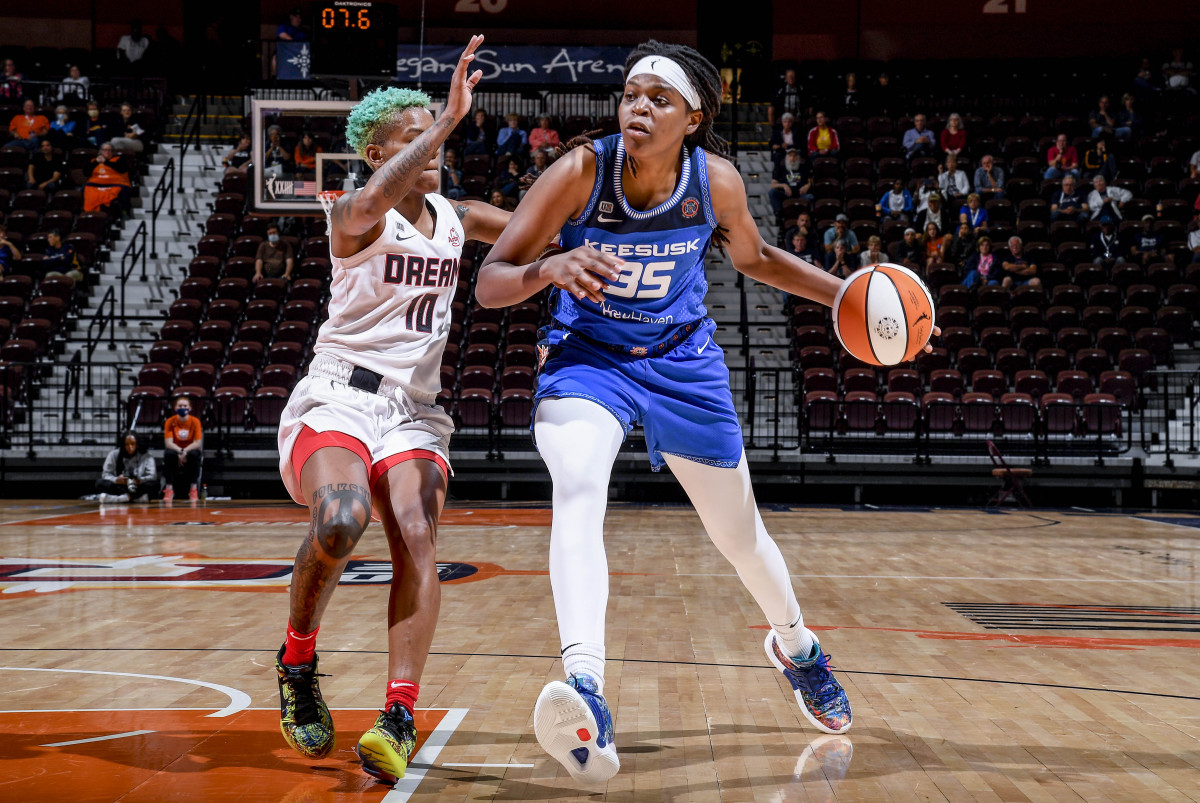
Long before players began to share their stories openly on either The Players’ Tribune or on their own social media accounts, six-time WNBA All-Star Chamique Holdsclaw had struggled privately.
For Holdsclaw, basketball had always been a coping mechanism. But after a series of events in the back half of her playing career and shortly after, including a suicide attempt followed by a 2012 incident when she attacked a former partner’s car, she was diagnosed with bipolar disorder. She received a call from Washington Post columnist Sally Jenkins, who said that Holdsclaw’s college coach, Pat Summitt, was worried about her.
Driven by one of her friends, Holdsclaw traveled from Atlanta to Summitt’s home in Knoxville. When she walked in, the Olympian saw Summitt sitting in one of two white chairs positioned right next to each other. Holdsclaw sat down to face Summitt, who had recently retired from coaching following her Alzheimer's diagnosis. Tears streamed down Holdsclaw’s face. She expected judgement and scolding from someone who she respected, but instead she received compassion. Summit encouraged her to take care of herself and get professional help.
“That moment there was just like a moment of stillness, a moment of clarity, and I'm sure some of the tears, you know, it was my situation, but also looking at somebody that I loved and respected,” she says. “I knew that she's also dealing with her journey. She had taken the time and wanted to see me, and it helped me. It really gave me that much more fight.”
Years later, Holdsclaw gave someone else that fight that she needed to find her own voice. She embarked on her own 12-city tour, with the league office providing Holdsclaw with an opportunity to visit each WNBA team and tell her story.
She remembered her time in Las Vegas meeting with the Aces on June 19, and then spending some more time with Cambage. They shared stories and hugged each other. Cambage remembers that day, too, and recalled how emotional she got just talking to someone who really got her and understood what she had been through. “I didn't realize how much it can create a shift, how it can save a life,” Holdsclaw says.
Less than two months later after her heart-to-heart with Holdsclaw, Cambage shared her story in her Players’ Tribune piece, entitled “DNP-Mental Health”:
Something I’ve been thinking a lot about this week is the NBA’s new rule — which says that every team has to have a mental health professional on staff. I’ve seen a lot of people praise the league for the rule, and for being so forward about mental health in general. And I’m one of those people. I think it’s a great thing they’re doing, and it’s going to help their players, for sure. They deserve a ton of credit.
But at the same time, I won’t lie — it’s disappointing to me that we’re praising anyone for “progress,” when so many women are being excluded from it. I mean….. doesn’t the WNBA deserve this same program?
Cambage’s openness has continued over the years, most recently when she withdrew from Australia's national team before the Tokyo Games, citing ongoing anxiety about the “bubble Olympics” and having to rely on her daily medication to control it. (It was also reported that she was involved in an incident that took place in a scrimmage against the Nigerian national team that might have jeopardized her spot with the Opals.) Cambage's frankness, starting with her essay, tore down walls that for so long held WNBA players back. While both Kevin Love and DeMar DeRozan famously told their stories about navigating mental illness (anxiety and depression, respectively), which opened the NBA’s own boundaries around discussing mental health, this was the first time that a WNBA player had gone out on a limb so publicly and didn’t hold back.
When Terri Jackson, the executive director of the players association, saw Cambage’s piece, she knew that the WNBPA had to step up its game. For her, the details of Cambage’s lifelong struggles made her think about what needed to be brought to the table in the upcoming negotiations with the league for the WNBA’s new CBA. “I think that was a sign, Liz's piece,” she says. “I think that was a wakeup call.”
When the groundbreaking new CBA was revealed publicly around five months later, in early January 2020, there was a section on mental health. It was broad and vague, reading:
“The parties hereto agree on the importance of providing players with robust mental health resources and will, among other initiatives, instruct the Medical Director [Dr. Altha J. Stewart] to develop a list of independent mental health providers in each Team market.”
In a press conference introducing the CBA, Nneka Ogwumike, the executive council president of the WNBPA; Jackson; and Engelbert all expressed how mental health is “top of mind” but failed to outline any specifics besides Stewart’s network of resources as the former president of the American Psychiatric Association.
Jackson noted that they wanted to establish a system of resources that were “more player-friendly” and would be available to folks even during the offseason. And Engelbert explained how there’s an opportunity to lead on mental health in collaboration with the PA, but this wasn’t “going to be something that is going to be fixed overnight.”
But that was all before the pandemic changed everything.
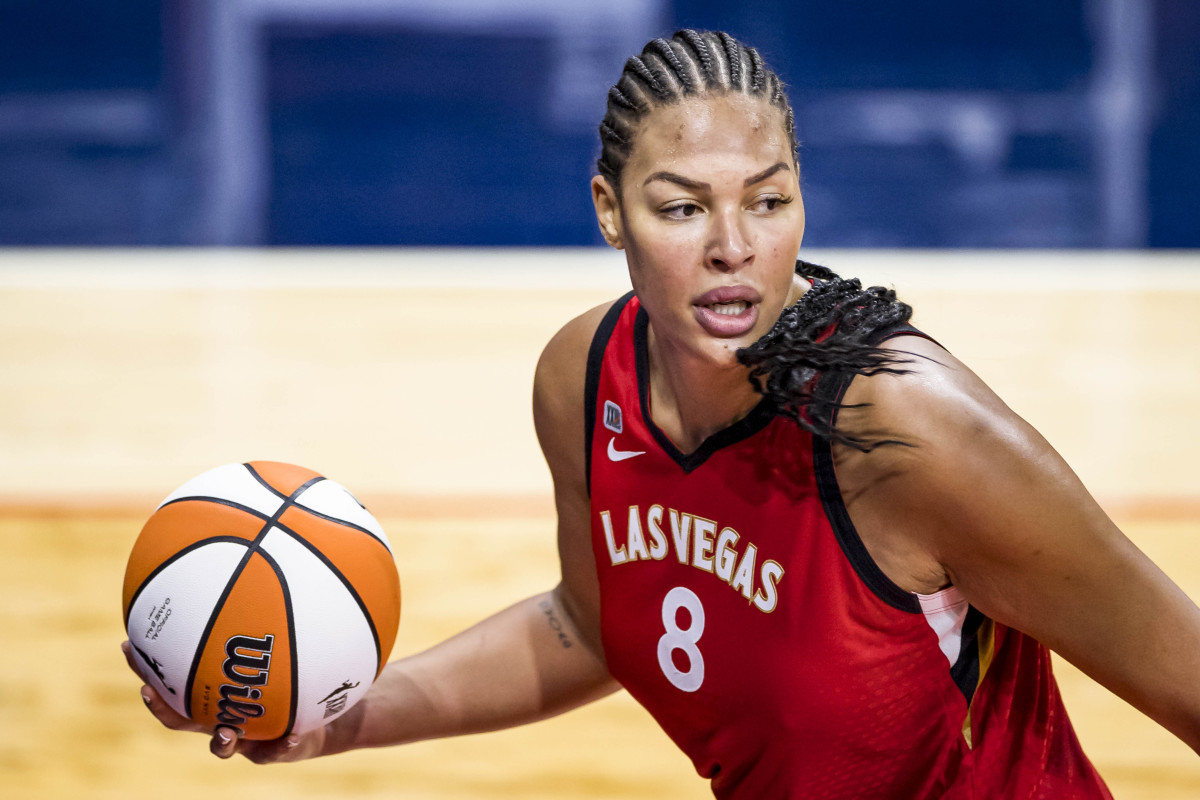
Kayla McBride already knew something wasn’t right before the pandemic. At the end of her 2019 season with the Aces, she wasn’t feeling like herself. And the heavy emotional weight within her kept “adding on and adding on.”
McBride decided not to go overseas and instead worked as a player development coach for her alma mater, Notre Dame. Basketball didn’t feel like a sanctuary anymore for the three-time All-Star.
She started asking herself all sorts of questions: Why was she feeling like this? Was she not eating correctly? Was it a toxic relationship that she had been in at the time? She tried to ameliorate everything else rather than focusing internally, which was where the issues actually lied.
McBride reached a breaking point once the pandemic hit, and her difficulties only deepened once she was cooped up in the Wubble. Her work-life balance was interrupted, just like so many people’s were in 2020.
It was difficult for Jackson to acknowledge out loud that when she helped the players plan out how they could play the 2020 season safely, she neglected the potential mental health concerns that the Wubble created. Her focus was on the COVID-19 virus itself rather than how unwell the players could be from isolation.
"I feel as though I dropped the ball when it came to the mental health part,” she says.
According to clinical and sport psychologist Kensa Gunter, the director of the league’s mental wellness program, WNBA Mind Health, in addition to feeling isolated, which is a main cause of anxiety and depression, the impact of experiencing “racialized violence” simultaneously exposed intense feelings of fear, sadness and rage. Before WNBA players reached the Wubble in July 2020, multiple incidents of police brutality toward Black people, including the killings of George Floyd and Breonna Taylor, launched a wave of civil unrest.
“The trauma that came as a result of that,” Gunter says, “and the exhaustion that I would say exists in the Black community in particular. … It was the exhaustion that we saw of just seeing this continued violence perpetrated within our community and seeing that displayed on TV in a number of different ways.”
Already in a vulnerable place before 2020’s health and racial pandemics, McBride had to act. While in Florida, she began taking Sertraline, a common antidepressant.
“It was really f------ hard, because as an athlete, as somebody with an ego, a competitive ego,” she says, “I don't want to sit there and feel like I need to take medicine every day to feel O.K., and so it was really hard for me. I didn't even tell my mom until maybe two months ago, because I was just like so … it felt like there was something wrong with me, you know?”
It wasn’t easy when Holdsclaw came forward in the late 2000s, either. But she remembers that teammates and other colleagues within the W would privately reach out, thank her and open up to her about their own experiences.
“That right there, it would shock me at first,” Holdsclaw says. “But it was like, ‘Hey, we got your back.’ ”
Today, that bond within the W has strengthened. Current Lynx guard Layshia Clarendon compares the collective strength of the players to a game of parachute with the players representing each little ball in a game of popcorn.
“In our league when someone comes out and steps out, like you fall into that, everybody catches you,” he says.
They equate that same energy to when Cheyenne Parker bared her soul last month, writing a detailed account in The Players’ Tribune all about her pregnancy, getting COVID-19 and the depression that came with it. Clarendon connects this newfound openness to the trust that was built in formulating a new CBA.
“I think that's come in the last maybe three or four years with how vulnerable people have been and all that we've been through with the CBA and all that we've just built and stood for,” they say.
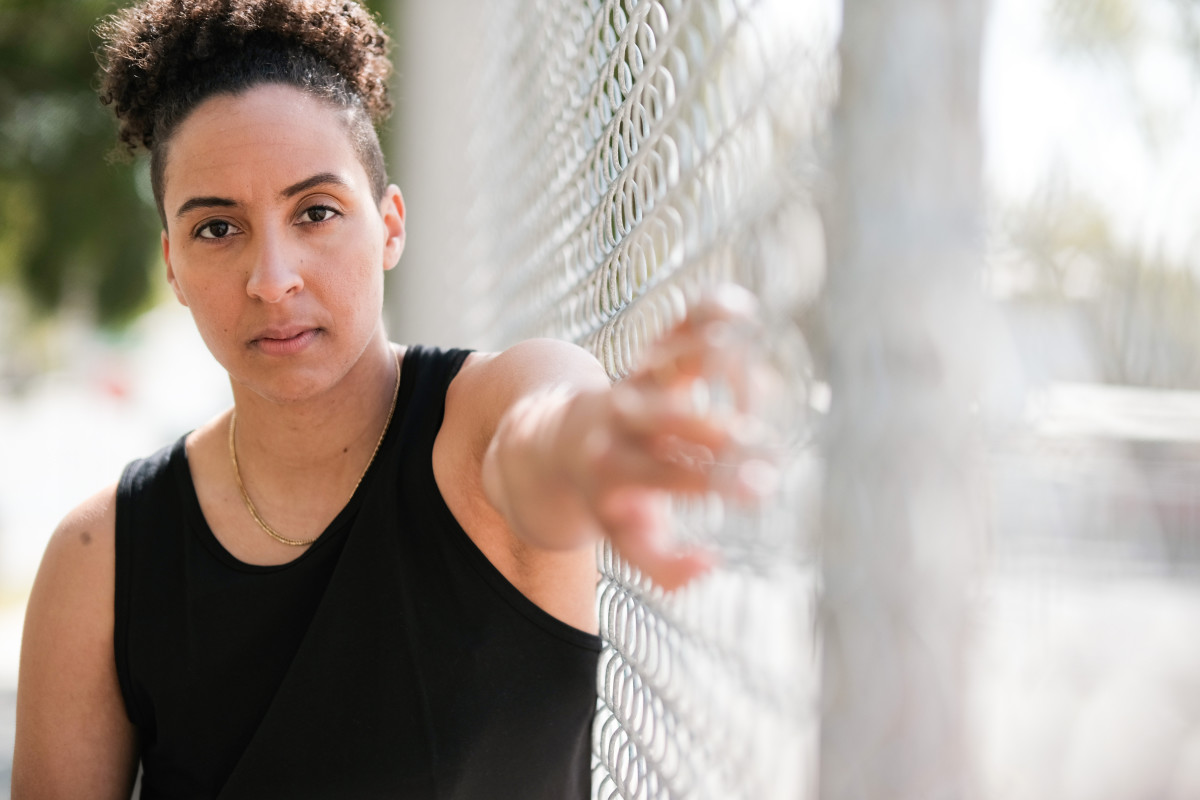
There’s been a noticeable shift inside the WNBA since Cambage, Samuelson, McBride and others have told their stories.
When rookie guard-forward DiDi Richards first addressed the media as a member of the Liberty, she noted that she hoped New York was going to pick her because of how it keyed in on mental health; the Liberty were the only team she met with that scheduled a meeting with their mental health screeners, medical professionals who perform an emotional health exam.
Since 2019, the league has been actively administering more resources with help of Gunter and Stewart. In addition to the community mental health check-ins that were instituted during the Wubble and now have continued through this season, Engelbert and the WNBA Mind Health group, which was formed in 2018, have put together a mental health program that will provide resources such as a mental health playbook, which was administered to some of the players at the WNBA All-Star Game. Post-Wubble, both the league and the WNBPA have begun to include former players. WNBA alumni have been invited to and participate during the checks-ins and will receive a copy of the playbook. At some point the league hopes to launch a Mind Health ambassadors program featuring players and alumni.
While players are just diving into the playbook, which includes situational advice based on their peers’ personal stories, they don’t have any knowledge yet of the ambassadors program, which Engelbert says will involve peer-to-peer counseling.
Both Gunter and Stewart have played major roles in assisting the league in preparing its new resources and aiding players who need help when they are first starting on their mental health journeys, but Clarendon notes that a challenge that the W faces right now is making sure players have access to mental health professionals outside of the team or league setting. It especially gets uncomfortable if players need to talk about something problematic within the workplace.
Could there be bias if Clarendon wanted to talk to a team professional about a conflict within their team? Clarendon currently sees a therapist outside of the Lynx, but another issue persists: She has to pay $150 out of network per session. More monetary resources and insurance opportunities are also what Clarendon believes are necessary inside the WNBA.
In Holdsclaw’s day, she had to pay $350 to see a psychiatrist. While her coach at the time offered to pay for it, the team wouldn’t. Holdsclaw was frustrated that while she was playing, teams would be more than willing to pay for multiple MRIs but not put a single dollar toward an appointment with a mental health professional.
Ogwumike still feels as though there isn’t consistency across the league when it comes to mental health resources. Although as of this season, the league officially requires each team to retain one to two licensed mental health professionals, she believes that more needs to be done. She’s seen some individual organizations provide more for their players, and has appreciated that, but she knows that the next step is having more standards for all teams.
“It's not something that we should crunch numbers to figure out how to get it,” she said. “It's something that needs to happen.”
As the most progressive league in professional sports, the WNBA sees its fight for better mental health and mental wellness as a matter of social justice. So while the league continues to battle internally over how to best serve its players, the players and franchises are thinking about how they can best outwardly serve their communities and educate their fans.
Currently, mental health falls under the Social Justice Council’s health-inequity pillar. (The council has also established two other pillars, including racial justice and voting rights, as well as LGBTQ+ advocacy, on their platform.) Gunter contends that the fight for mental wellness is a global social justice issue. Mental health care is still viewed as something for the privileged.
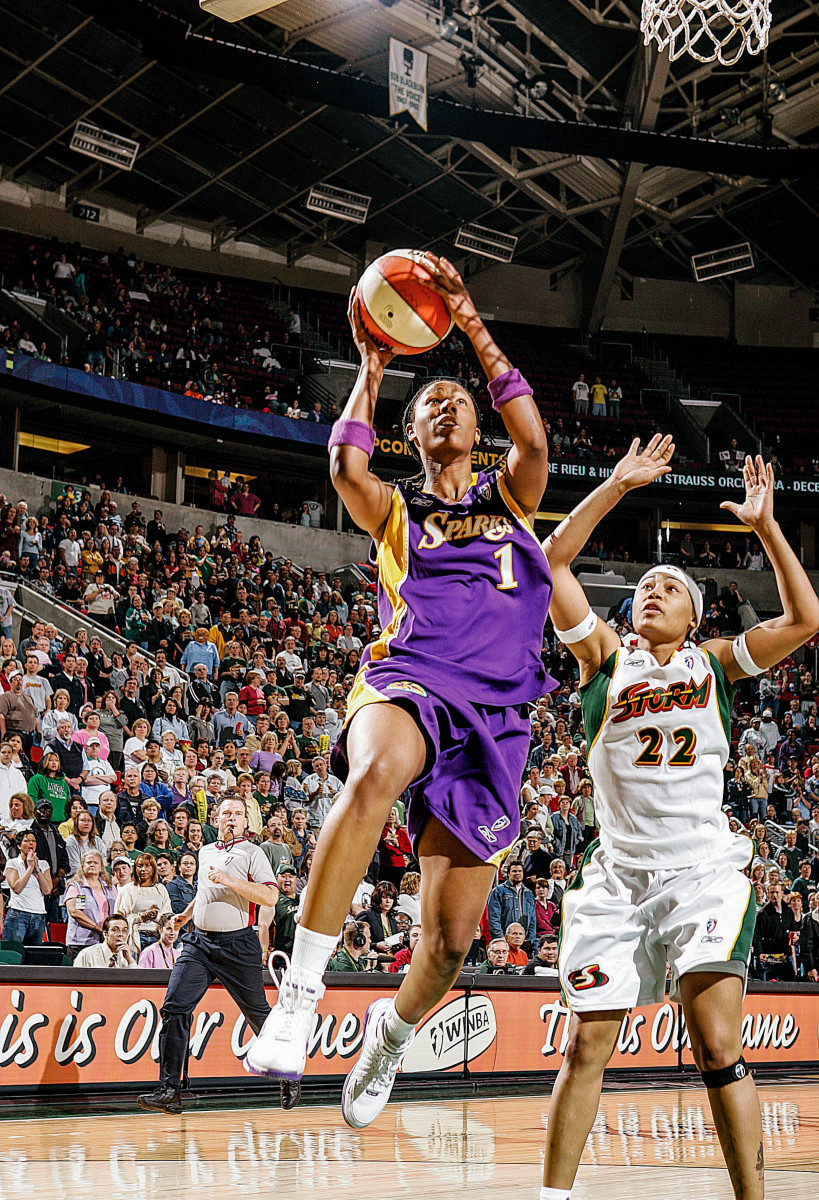
On Aug. 10, players had the opportunity to learn more in a conversation entitled “Health Dose.” Sponsored by the WNBPA in conjunction with the Black Women’s Health Imperative, attendees learned about how to make the most informed physical and mental health decisions for themselves and loved ones. Psychiatrist Jessica Clemons identified resources and tools as to how players can best inform and empower their communities.
A couple of days later, Ogwumike and WNBPA secretary Elizabeth Williams appeared for a discussion during the Commissioner's Cup Conversations, a YouTube series dedicated to advancing the W’s ongoing social justice initiatives. The two players discussed how they’ve used mental and emotional health resources to help decompartmentalize the responsibilities they have as basketball players alongside their deep care to advocate for the communities around them. Williams noted that Gunter, who is also the designated mental health professional for her team, the Dream, has helped her understand how she can best separate out her goals on and off the court.
Players like McBride, Jones and Samuelson understand that they’re still learning. Health is a process, and dealing with mental illness isn’t linear. You don’t just get better after taking medication for six months. It’s a process that continues throughout life.
“When you get to the other side and you start to feel better and have these people around you in your circle, you know, it's an amazing feeling,” McBride says. “But it's also a fight that only you're built for, for your own, you know, your own mental health and your own things that you go through on a daily basis, and I still go through this s--- daily.”
And Samuelson, who recently had to miss playing in the Olympic three-on-three competition due to a positive COVID-19 test, reached out to her therapist. She asked for help quicker than she would have a couple of years ago.
Jones is also still finding her way through the grief. There were moments when she thought to herself, “I’m still so f----- up.” She realized that she had done so much to try to heal on her own. She still felt the pain and then realized that she needed a professional to help her learn how to continue the healing process.
“If you want to learn how to shoot a layup, would you rather watch somebody on YouTube, or have a WNBA or NBA player teach you how to shoot?” she asks.
When she went to EuroBasket to play with her Bosnian national team, it at first didn’t register that she had to adjust once again to playing in a place where she didn’t know the language and had to be confined to a bubble. She felt a depressive episode coming on. This time, she gave Gunter a call.
After years of being in the dark on mental health best practices with still a long way to go, the key for the WNBA moving forward is to continue to listen to and lean into the unfiltered stories of its players. While the league and the WNBPA will continue to survey what its players need, players will continue learning about themselves from each other.
After a 2020 when the WNBA’s players helped define how much those with a platform can change the course of the world beyond basketball, 2021 has returned the favor, helping the greatest athletes in the world finally understand how to better themselves and others from within.
More WNBA Coverage:
